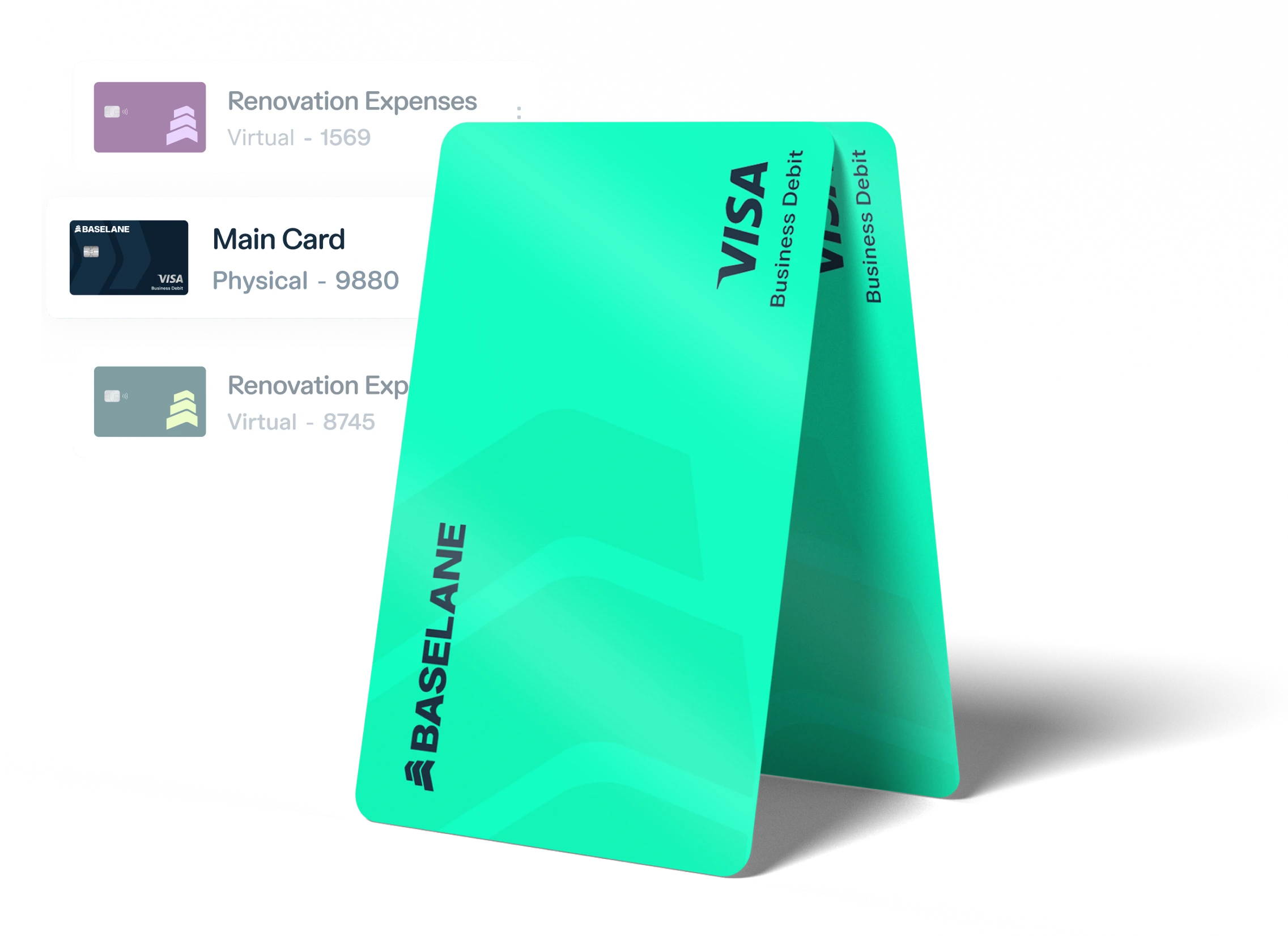Managing rental properties involves a long list of responsibilities, but few are as critical or as time-consuming as billing and collecting rent. If you’re still relying on manual methods like spreadsheets or paper invoices, the process can lead to delays, inaccuracies, and wasted time. Rental billing software offers a smarter solution. Digitizing and streamlining rent collection helps eliminate errors, improve cash flow, and free up your time for higher-value tasks.
In this guide, we’ll explore what billing software is, the key benefits it offers, must-have features, and how to choose the best option for your rental portfolio.
Key takeaways
- The billing software streamlines rent invoicing, payment collection, and reminders, reducing manual tasks, errors, and administrative overhead.
- Using billing systems boosts operational efficiency, enhances tenant satisfaction, and supports scaling portfolios.
- Software costs vary by platform and portfolio size, but most expenses are tax-deductible as part of your rental property’s operating costs.
- Whether you’re managing one unit or a large portfolio, adopting billing systems saves time, improves accuracy, and positions your business for long-term growth.
- Baselane stands out as an all-in-one financial platform purpose-built for landlords, making it a top choice for property billing software.
What is real estate billing software?
At its core, real estate billing software is a digital tool designed to handle the processes of generating invoices and collecting payments from tenants. It replaces manual tasks like creating and sending individual rent invoices, tracking due dates, and logging payments. A real estate billing software handles these repetitive actions automatically on a set schedule.
This specialized software allows you to set up recurring charges for rent, fees, and utilities, which the system then bills tenants for automatically each billing cycle. Tenants receive notifications and can often pay directly through the software, creating a seamless experience for both parties.
The pain of manual billing and why billing systems win
Relying on manual billing methods or even just a basic property management spreadsheet includes challenges. Using these methods requires a considerable amount of time on administrative tasks like drafting invoices, sending reminders, manually tracking incoming payments, and reconciling bank statements. This manual effort is time-consuming and prone to human error, potentially leading to inaccurate records or missed payments.
Also, manual processes make it harder to enforce lease terms, such as applying late fees consistently or tracking partial payments accurately. This directly impacts your cash flow and profitability.
Compared to manual systems, software provides a clear advantage. It standardizes processes, reduces errors, and frees up valuable time that can be redirected to property maintenance, tenant relations, or growing your portfolio.
Benefits of recurring billing software for landlords & property managers
Not all systems are created equal. To ensure a platform effectively addresses the needs of property management, look for these essential features:
- Recurring billing & invoicing: This is the cornerstone of the software. The system should allow you to set up recurring charges (rent, fees, etc.) to be invoiced and sent to tenants on a scheduled basis. This feature is critical for recurring billing.
- Online payment options: Tenants should have the ability to pay rent securely online via various methods, such as ACH (bank transfer) or credit/debit cards. Offering multiple options improves convenience and speed of payment. This is a core component of bill payment and facilitates it.
- Auto-pay setup for tenants: Allowing tenants to set up recurring payments directly from their bank account ensures rent is paid on time every month without manual effort from either party.
- Payment reminders: The software should send reminders to tenants before and after rent is due, reducing the need for manual follow-up.
- Late fee calculation and application: The system should calculate and apply late fees according to the lease terms if rent is not paid by the due date, ensuring consistent enforcement.
- Customizable charges: Beyond standard rent, the software should handle variable or additional charges like utilities, pet fees, or prorated rent, allowing for flexibility in billing.
- Integration with property management accounting: Seamless integration with accounting tools is key to using income tracking and simplifying reconciliation. This is key for effective management.
- Payment tracking and history: A clear record of all transactions, payments received, and outstanding balances for each tenant and property is vital for financial transparency and dispute resolution.
These features, when combined, provide a robust software platform that supports efficient property management and payment. When exploring landlord software or software for property managers, verify these billing capabilities.
This is particularly important when comparing different property management tools for landlords or selecting real estate investor software. Also, look for software for property managers that makes implementing these workflows straightforward.

Addressing common billing challenges
Manual billing is a significant source of stress and inefficiency for property owners. Using billing directly tackles these common challenges:
- Late or missed payments: Reminders sent by the system proactively prompt tenants before and after rent is due, reducing the likelihood of forgetting a payment. Online payment options also remove common excuses for late payment, such as mail delays or inability to deliver checks.
- Payment discrepancies and errors: Calculation of rent, fees, and prorations, combined with application of payments received, drastically reduces the chance of mathematical errors or misapplied funds inherent in manual data entry.
- Manual reconciliation: Systems with accounting integration match incoming online payments to the correct tenant and property, simplifying the bank reconciliation process that is often tedious with manual methods.
- Inconsistent enforcement of lease terms: Late fee application ensures that policies are applied uniformly and consistently across all tenants, avoiding potential disputes or perceived unfairness.
- Lack of clear records: Billing management systems maintain a digital trail of all invoices, payments, and communications, providing a single, accurate source of truth for financial records.
By implementing billing management systems, you can overcome these hurdles, leading to smoother operations and healthier financials.
Top property billing software platforms
Numerous platforms offer software as part of their property management suite. These range from solutions designed for individual landlords to comprehensive systems for larger property management companies. When you compare billing features across platforms, consider your portfolio size, budget, and specific feature needs.
Here are some of the best bill payment solutions on the market:
- Baselane: Combines software for rent collection with integrated banking and AI bookkeeping, with no monthly fees. It generates rent invoices and late fees, tracks payments, and tags transactions to the right property, offering a streamlined, all-in-one financial management platform.
- TenantCloud: Offers basic tools for online rent collection, late fee setup, and accounting, with features that can support both small and growing portfolios.
- RentRedi: Includes mobile-accessible rent requests, online payment processing, and basic expense tracking for landlords.
- DoorLoop: Provides property management features such as accounting, positioned for landlords managing multiple units.
- Buildium: Features standard accounting and payment tools, commonly used by mid- to large-sized property managers.
- AppFolio: A property management platform with some accounting tools, generally targeted toward larger or enterprise-level portfolios.
- Avail: Offers rent collection and basic tools for landlords managing a small number of units.
Banking Built to Run Your Rentals
Automate rent collection, bill payments, expense tracking & more—no monthly fees.
Comparison of billing features across property management platforms
Below, we’ll compare billing systems.
| Feature | Baselane | TenantCloud | RentRedi | DoorLoop | Buildium | AppFolio | Avail |
|---|---|---|---|---|---|---|---|
| Recurring Billing | |||||||
| Online Payments | |||||||
| Payment Reminders | |||||||
| Late Fees | |||||||
| Integrated Banking | |||||||
| Bookkeeping & Accounting | |||||||
| Pricing | No monthly fees | Starts at $18/month | Starts at $12/month (billed annually) | Starts at $69/month | Starts at $58/month | $1.49–$5/unit; $280 minimum/month | Free plan; premium $9/unit/month |
Pros and cons of property billing software
Understanding the advantages and potential drawbacks is important when considering property billing software.
Pros of property billing software
-
Significant time savings: Tackle repetitive tasks like invoicing and reminders.
-
Increased accuracy: Reduces errors associated with manual data entry and calculations.
-
Improved cash flow: Predictable and faster income collection strengthens financial management.
-
Better tenant experience: Provides professional invoices and easy online payment access.
Cons of property billing software
- Initial cost: Many platforms have monthly or annual fees, although free options exist for limited units. Baselane is the exception, with no monthly or hidden fees.
- Learning curve: Requires time to set up the system and learn how to use all features effectively.
- Reliance on technology: Requires internet access and depends on the software provider’s uptime and reliability.
- Transaction fees: Online payment processing (especially credit cards) often involves fees, which may be paid by the landlord or tenant.
- Integration challenges: May require effort to integrate with existing accounting practices if not using an all-in-one solution like Baselane.
Overall, the benefits often outweigh the cons, especially as portfolio size increases and the limitations of manual systems become more pronounced.
Choosing the right software for your portfolio size
Selecting the right software best for small, medium, or large portfolios depends heavily on the scale and complexity of your operations. Here are some expert tips to pick the right software:
- Small portfolios (1-10 units): For landlords managing just a few properties, affordability and ease of use are often top priorities. Look for platforms offering free tiers or low-cost per-unit pricing. Essential features include rent collection, online payments, and basic expense tracking. Don’t pay for complex features you won’t use.
- Medium portfolios (10-50 units): At this scale, time savings and robust features become more critical. Consider platforms with tiered pricing that offer more advanced reporting, integrated accounting, and potentially tenant screening or maintenance tracking features. Scalability is important as you might continue to grow.
- Large portfolios (50+ units): Enterprise-level solutions are typically needed here. Choose software with strong accounting, advanced reporting, business tool integrations, user management, and workflow support.
Look for software with robust accounting, reporting, integrations, and multi-user management. Baselane combines these features with real estate billing software, rent collection, and bookkeeping, all in one platform built for landlords and real estate investors.
Understanding the cost
The average cost of real estate billing software for property management varies significantly based on the platform, the number of units managed, and the features included. Most software uses one of the following pricing models:
- Per-unit pricing: A fixed fee per unit per month (e.g., $1 to $2 per unit).
- Tiered pricing: Different plans based on unit count or feature sets.
- Flat fee: A fixed monthly or annual fee, often with a cap on units or features. Less common for billing-focused tools, more for general property management suites.
- Percentage-based: Monthly fees are a percentage of the rent collected. Less common for core billing software itself.
Average costs can range from free for a few units up to $280+ per month for larger portfolios or more feature-rich platforms. Enterprise solutions for large property management companies can cost hundreds or even thousands per month.
Tax benefits of claiming software costs
Good news for property owners. The cost of real estate billing software and other property management software is generally considered a deductible business expense. As part of the necessary costs incurred to manage your rental property business, these fees can typically be listed under operating expenses of rental property on your tax return.
For Airbnb operating expenses or general property expenses, software used for managing those properties is also usually deductible.
The specifics of how and where to claim these costs (e.g., Schedule E for rental properties) can vary. Keeping accurate records of your software subscription fees is crucial. It’s always recommended to consult with a qualified tax professional for rental property accounting tips to ensure you’re claiming these costs correctly according to current tax laws and your specific situation.
Get more out of your rental billing software with Baselane
Manually collecting rent and tracking payments in spreadsheets is the quickest way to lose hours on admin every month. Baselane gives your time back by tackling the tasks that slow you down; bill payments, rent collection, expense tracking, and tax reporting are all done for you.
Ready for rental billing software that works harder so you don’t have to? Get started for free today.
FAQs
It’s a digital tool that helps simplify property management for private landlords by generating rent invoices, sending payment reminders, and collecting rent on a set schedule. This replaces the need for chasing down checks and filling in rent ledgers.
By sending out rent reminders and offering convenient online payment options, rental property billing software helps reduce late payments and may even speed up deposits, giving you more consistent cash flow for better financial planning.
Look for bill payment solutions with banking integrations that offer real estate-specific features for managing cash flow, like multiple accounts, auto bill pay, and property-level expense tracking. Check out our list of the best banks for real estate investors.
Yes, most platforms allow you to set up late fee rules based on your lease terms, applying charges if tenants miss payment deadlines, with no manual tracking needed.
In most cases, yes. Software used to manage your rental business is generally a deductible operating expense. Be sure to consult a tax professional to confirm what applies in your situation.
Not at all. Today’s tools are built for all portfolio sizes, from landlords with a single unit to full-scale management companies. Whether you're managing long-term rentals or need a bank account for Airbnb income, a billing system helps at any scale.
Most platforms integrate with external bank accounts for rental property owners and accounting software, which may require additional fees for multiple third-party applications. Baselane combines rent collection, banking, and AI-powered bookkeeping built specifically for real estate investors, all in one platform with no monthly fees.







